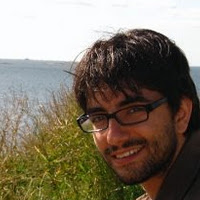It takes two to lie
New research shows that deception is a more complex social phenomenon than we thought. Deceiver and deceived show higher levels of speech and movement coordination than in truthful conversations. Instead of just focussing on the deceiver future research should include the social life of deception: the way deceiving behaviors resonates and spread across interlocutors. This is the conclusion of a new academic article co-authored by Riccardo Fusaroli, an associate professor at the Interacting Minds Centre and at the School of Communication and Culture.

“We rarely notice how our behaviour changes and adapts in relation to the people we’re talking to. But previous research has shown how important micro-behaviour is for social interactions. In our study of deception we focused on this micro-behaviour, which involves the way we very quickly adjust to each other’s speech and movement during conversations,” explains Nicholas Duran, an assistant professor at Arizona State University, who is the lead author of a new academic article on deception.
The researchers developed automated ways of measuring fast adaptation of speech and movement in truthful and deceiving conversations. The findings indicate that conversations involving deception contain an increased level of coordination between the person telling a lie and the person listening.
“Most previous studies in this field focus on whether you can spot a lie based on a person’s behaviour, but we were more interested in what could be called ‘the social life of deception’. For instance, when people lie in a conversation, what effect does this have on social coordination? The results of our study show that conversations involving deception contain an increasing level of coordination. The speech and movements of the deceiver and the deceived become more coordinated than in conversations in which both parties are telling the truth,” reports Riccardo Fusaroli, an associate professor at the Interacting Minds Centre, who is the co-author of the article.
New insight In the trial on which the article is based, participants were brought together to discuss their opinions on controversial topics like abortion, gay marriage and drug legalisation. Then, in secret, one of the participants was instructed to argue for an opinion opposite to what they really thought. The conversations involving deception displayed a higher degree of interpersonal coordination: the participants moved their heads in a more synchronous fashion, and their speech became more coordinated. Usually, coordination is taken to be a sign of a well functioning and truthful social interaction. “We demonstrate that coordination is more complex than this, and that we can use it strategically to achieve deception, to defuse a potentially conflictual situation and even to escalate it,” explains Fusaroli.
New insight
In the trial on which the article is based, participants were brought together to discuss their opinions on controversial topics like abortion, gay marriage and drug legalisation. Then, in secret, one of the participants was instructed to argue for an opinion opposite to what they really thought. The conversations involving deception displayed a higher degree of interpersonal coordination: the participants moved their heads in a more synchronous fashion, and their speech became more coordinated.
Usually, coordination is taken to be a sign of a well functioning and truthful social interaction. “We demonstrate that coordination is more complex than this, and that we can use it strategically to achieve deception, to defuse a potentially conflictual situation and even to escalate it,” explains Fusaroli.
Facts
The article, which is entitled Conversing with a devil´s advocate: Interpersonal coordination in deception and disagreement, was published recently in PLOS ONE. The lead author is Nicholas Duran, an assistant professor at Arizona State University. The co-author is Riccardo Fusaroli, an associate professor of cognitive science at the Interacting Minds Centre and School of Communication and Culture, Aarhus University.
You can read the article at videnskab.dk
Further information

Associate professor Riccardo Fusaroli
Interacting Minds Centre (IMC) & School of Communication and Culture
mail: fusaroli@cc.au.dk
Tel.: +45 8716 3145
